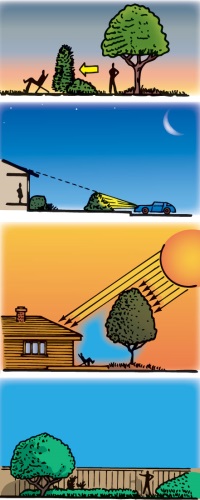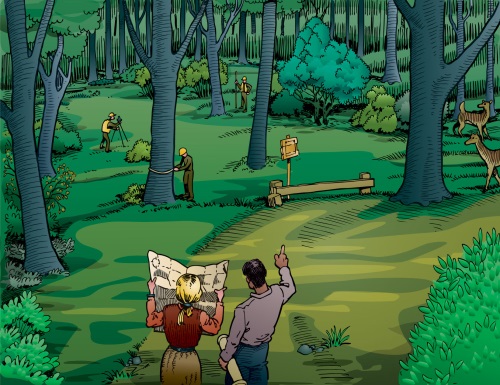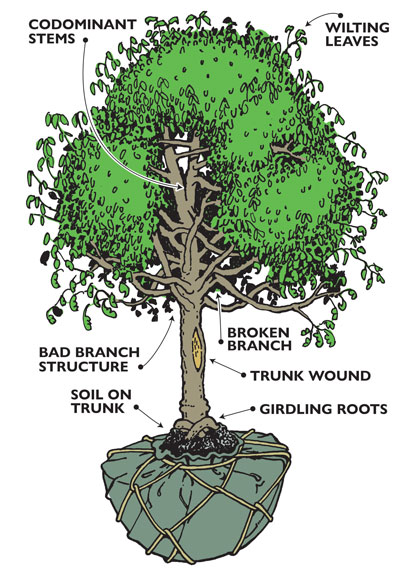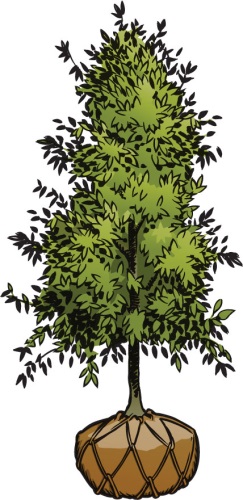Choosing the Right Tree
 Although trees are a great addition to a landscape, not all trees are equally well-suited for every site or climate. Tree selection and placement are important decisions a homeowner makes when landscaping or replacing a tree. Matching the tree to the site benefits both the tree and the homeowner.
Although trees are a great addition to a landscape, not all trees are equally well-suited for every site or climate. Tree selection and placement are important decisions a homeowner makes when landscaping or replacing a tree. Matching the tree to the site benefits both the tree and the homeowner.
Homeowners should consider soil conditions, what clearance is needed for sidewalks or driveways, and what function the tree will serve before asking the question, “What kind of tree should I plant?”
Learn more about proper tree selection and placement.
Tree Function

Different trees serve many different functions. For example, deciduous shade trees cool homes in the summer and allow the winter sun to heat homes when they lose their leaves, while evergreens can provide a windbreak or a screen for privacy, and fruit trees or shrubs provide food for the owner or wildlife. An arborist can help homeowners select the right tree based on the landscape and the desired function.
Tree Form and Size
Selecting the right form (shape) to complement the desired function can significantly reduce maintenance costs and increase the tree’s value in the landscape. In addition, mature trees typically provide the greatest economic and environmental returns.
Hundreds of form and size combinations are available for homeowners to choose from. Low spreading trees may be planted under overhead utility lines, while a tall, narrow evergreen may provide a screen.
Site Conditions

Choosing a tree for the right site conditions is the key to tree survival and reduced maintenance. Consider the following:
- Soil conditions
- Exposure to the sun and wind
- Space constraints
- The tree’s hardiness or ability to survive extreme temperatures in a specific region
- Human activity
- Drainage
- Insect and disease susceptibility
Personal preferences and site constraints also play major roles in the selection process. An arborist can provide more information and help homeowners throughout the tree selection process.
Learn more about these and other factors as they relate to tree selection and placement
Buying High-Quality Trees

A high-quality tree can become a long-lasting asset to your property, whereas a low-quality tree may develop costly problems over time, increasing the need for maintenance and reducing the benefits a tree can provide.
Learn more about buying high-quality trees.
Tree Quality Characteristics

A high-quality tree has
- A straight trunk will well-spaced branches.
- An exposed trunk free of wounds or damage.
- A root system where roots grow straight out from the trunk.
A low-quality tree has
- Weak form in which multiple stems originate from the same point and branches grow into each other.
- A trunk with wounds from handling or incorrect pruning.
- Limited, crushed, or circling roots in an undersized ball or container.
These problems can greatly reduce the tree’s prospects for a healthy and productive life. When buying a tree, inspect it carefully to identify problems related to form, injuries, or roots.
Learn more about these and other things to look for when buying high-quality trees